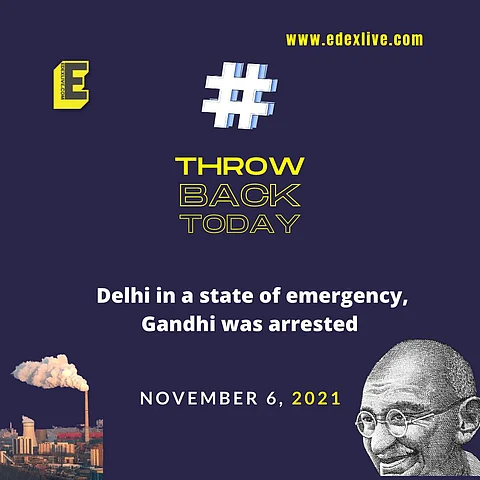

As Delhi yet again became toxic and suffocating post-Diwali, let's take a moment to remember what happened on November 6, 2016 — the Indian government declared severe levels of pollution in the national capital an “emergency situation”. It was so bad that letting children out was considered hazardous and even the schools were shut down.
Delhi Chief Minister Arvind Kejriwal announced a five-day ban on construction and demolition. The PM2.5 pollutants levels had reached at least 999 in parts of the city within that week, the safe PM2.5 level is 60. It is noteworthy that on November 5 this year, the PM2.5 level in Delhi was 1,164. To put it in perspective, high levels of PM2.5 can reach deep into the lungs and breach the blood-brain barrier.
To dial back a little further into Indian history — to a time when people at least had breathable air — on November 6, 1913, Gandhi was arrested while leading a march of Indian miners in South Africa. After being released on bail, Gandhi joined the protesters again and was re-arrested.
The eight-year struggle led to the passing of the Indian Relief Act, which abolished the three-pound tax, legalised Hindu and Muslim marriages, and made provisions for Indian children to be reunited with their parents in South Africa. This is more so important because it was in South Africa that Gandhi became convinced that Satyagraha is the strongest tool of resistance.
